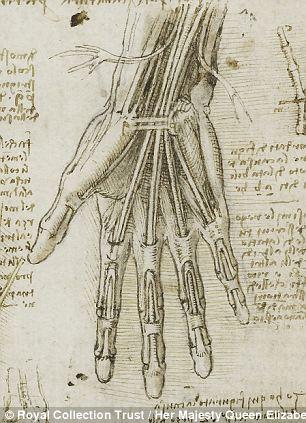An upcoming exhibition in Scotland shows that Italian genius Leonardo Da Vinci’s anatomical drawings were incredibly accurate. The ‘Leonardo Da Vinci: The Mechanics of Man’ show opens at The Queen’s Gallery, Palace of Holyroodhouse in Edinburgh on 2 August 2013 and runs until to 10 November 2013. It employs the latest medical technology to explore the contemporary relevance of Leonardo’s anatomical research. The exhibition focuses on Leonardo’s anatomical investigations during the winter of 1510 to 1511, when he carried out some 20 dissections of the human body at the University of Pavia in collaboration with a professor of anatomy, Marcantonio della Torre. Leonardo recorded his studies in ‘Anatomical Manuscript A’, in which he illustrated almost every bone in the human body and many of the major muscle groups. Leonardo crammed more than 240 individual drawings of astounding clarity and more than 13,000 words of annotations in his distinctive mirror-writing on a series of 18 sheets that make up the manuscript. Many of his anatomical demonstrations are similar to modern medical images, in that they both attempt to depict complex, layered anatomical structures. ‘Leonardo Da Vinci: The Mechanics of Man’ presents Leonardo’s drawings alongside images prepared using the latest medical-imaging technology, including 3D ultrasound, CT and MRI scans. The juxtaposition reveals how far-sighted Leonardo’s work was and how he remains relevant for anatomists in the 21st century. The show organisers assert that if Leonardo’s groundbreaking work had been published during the Renaissance, it would have transformed European knowledge of the subject. A book accompanying the exhibition, also called ‘Leonardo Da Vinci: The Mechanics of Man’ reproduces the artist’s manuscript. Each of the drawings is reproduced in its original size and the book includes Leonardo’s extensive notes.








